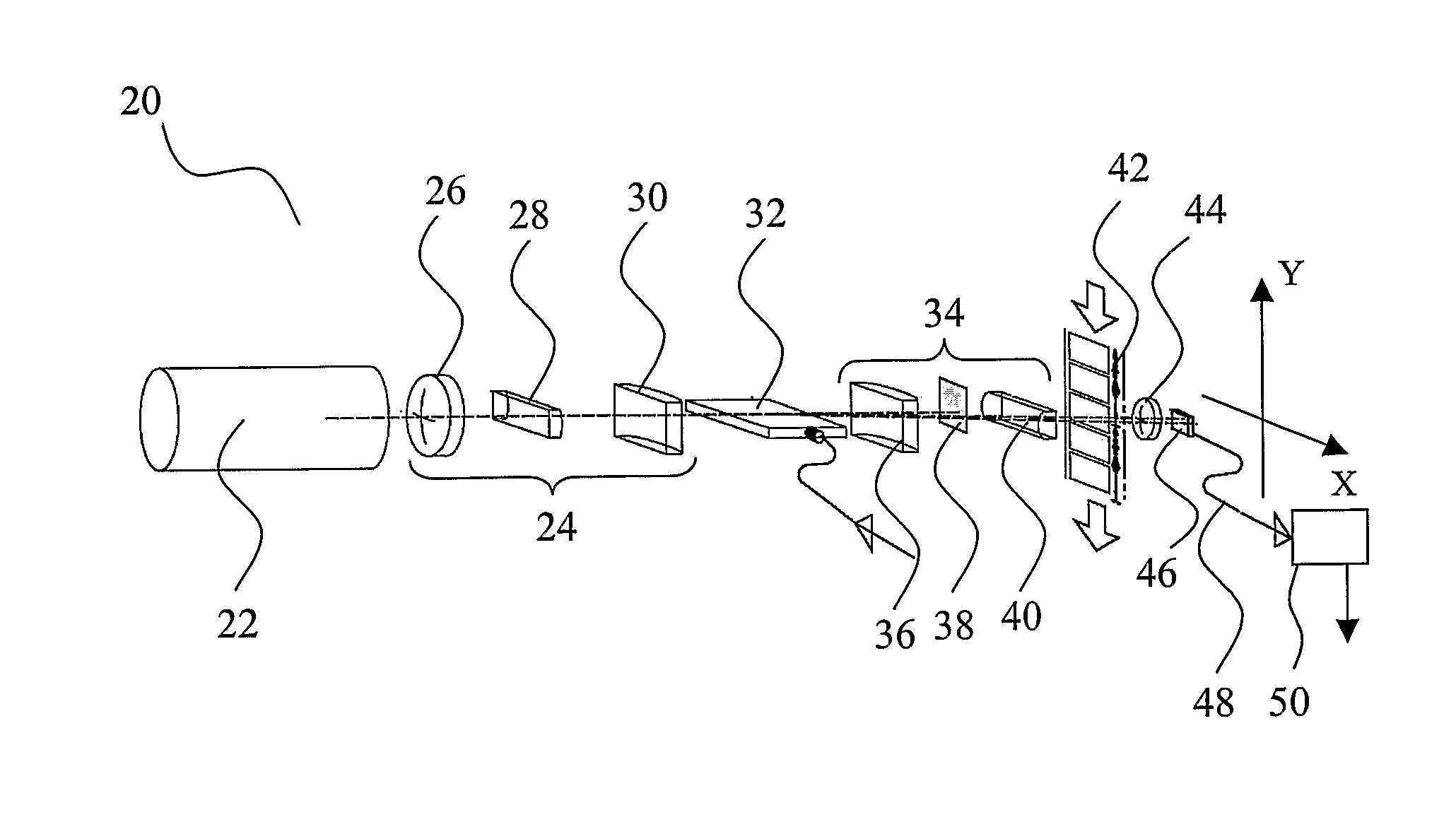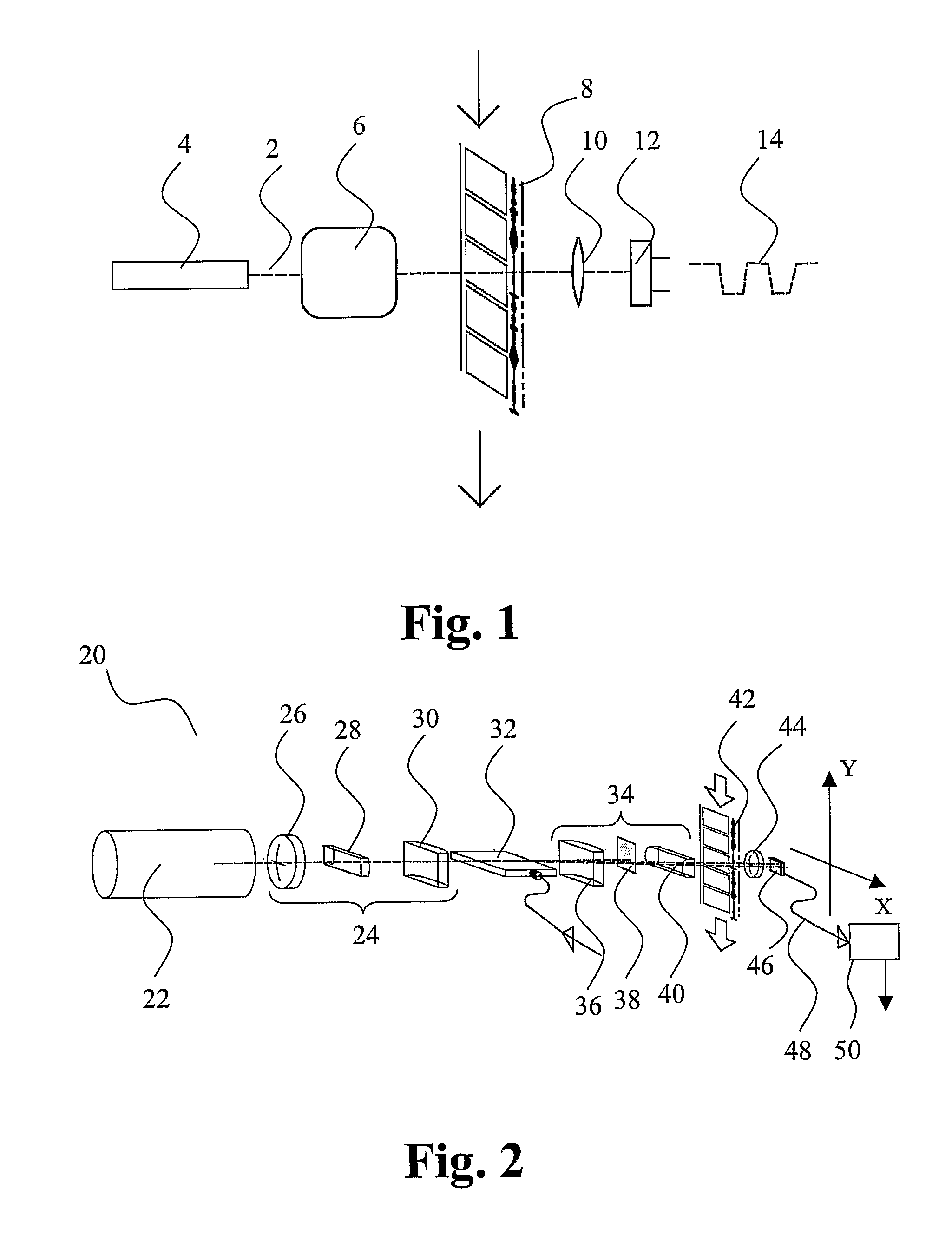Optical sound track scanner system
a scanner and optical sound technology, applied in the field of optical sound scanner systems, can solve the problems of generating more noise, primary source of noise, and limited optical sound bandwidth, and achieve the effect of minimizing cost and effort and simplifying the process
- Summary
- Abstract
- Description
- Claims
- Application Information
AI Technical Summary
Benefits of technology
Problems solved by technology
Method used
Image
Examples
Embodiment Construction
[0079]The principle of operation of the optical scanner system is schematically illustrated in FIG. 1. A light beam 2 is emitted from a laser 4 and a scanner 6 moves the light beam in a regular pattern across the film sound track 8 in a direction perpendicular to the direction of film movement indicated by the arrow 1. A lens 10 collects the light after transmission through the film onto a detector 12, which generates an electrical signal 14 that goes low when the light beam is blocked and high when the light beam is transmitted through the film. The system produces time-slices of the sound track in the form of a pulse-width modulated signal. The pulse edges are subsequently transformed by an electronic gate and trigger circuit (not shown) into clean pulses, which are subsequently demodulated and filtered into sound. Alternatively, the detector output signal may be digitised for further digital signal processing.
[0080]FIG. 2 shows an embodiment of the present invention employing an ...
PUM
| Property | Measurement | Unit |
|---|---|---|
| scanning frequency | aaaaa | aaaaa |
| diameter | aaaaa | aaaaa |
| diameter | aaaaa | aaaaa |
Abstract
Description
Claims
Application Information
 Login to View More
Login to View More - R&D
- Intellectual Property
- Life Sciences
- Materials
- Tech Scout
- Unparalleled Data Quality
- Higher Quality Content
- 60% Fewer Hallucinations
Browse by: Latest US Patents, China's latest patents, Technical Efficacy Thesaurus, Application Domain, Technology Topic, Popular Technical Reports.
© 2025 PatSnap. All rights reserved.Legal|Privacy policy|Modern Slavery Act Transparency Statement|Sitemap|About US| Contact US: help@patsnap.com



